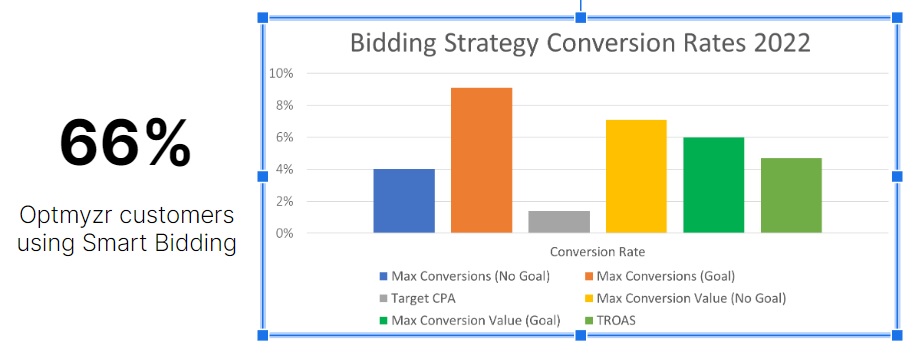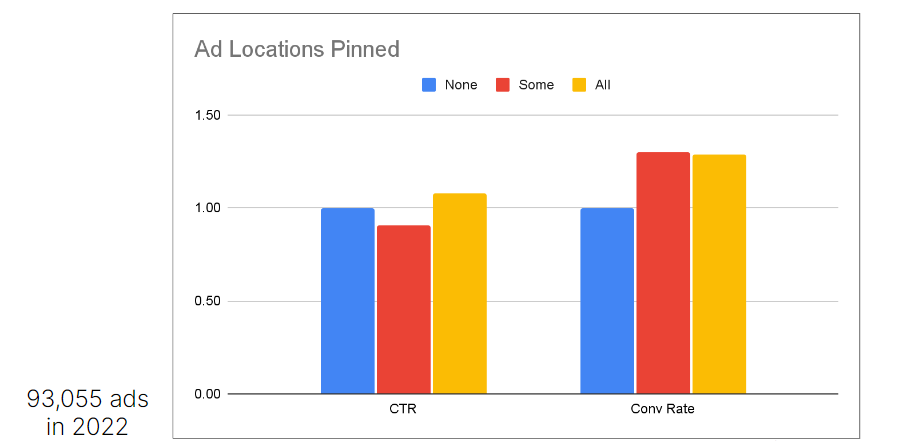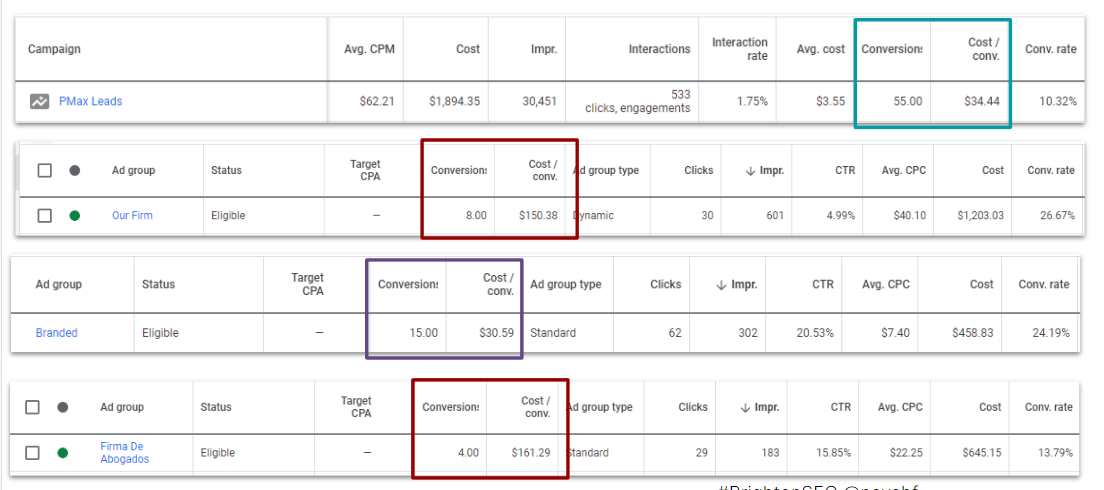One of my favorite questions for new professional acquaintances is, “What’s your favorite innovation from the past six months, and why?”
I like this question for a few reasons:
- It gives me a sense of where the person focuses and where we might be able to collaborate.
- The “why” tells me whether they understand the thing or if they are just following the trends.
- Innovation can mean many things, and understanding what the person finds innovative is helpful in framing other marketing concepts.
Automation almost always comes up. PPC marketers are spoiled for choice on ways to automate their workflows, such as:
- Bidding: Using native strategies or building their own rules and scripts.
- Creative: Fully delegating control or leveraging built-in A/B testing.
- Audiences: Owning targeting/exclusions or opting into machine learning choices through broad match and Performance Max (PMax).
- Channels: Directly choosing budget and creative allocation vs. allowing for algorithms to make those calls.
This article will not pass judgment on which automation options you might choose to opt into. Rather, it will outline the mechanics of each, as well as how to make them work.
Automation In Bidding
Bidding arguably is one of the few things that should always be automated.
How advertisers automate is where there’s room for different paths to profit:
- Native bidding strategies such as Maximize Conversions, Maximize Conversion Value, Target Impression Share, and Maximize Clicks.
- Automated rules based on key metrics that adjust bids based on predefined criteria.
- Bid adjustments using levers like device, location, and audiences to bid up or down.
Native Bidding
If you opt for native bidding, it’s vital that you trust your conversion tracking. Ad networks use conversions as the main guiding light to know whether to invest or pull back.
While it’s true that Max Clicks and Target Impression Share don’t need conversion tracking data to function, it’s still vital that you’re feeding in the right data.
A common mistake people make is including too many conversion actions as primary. This usually results in double counting or including steps on the journey that aren’t worth feeding into the algorithm.
Another common mistake is setting a target that isn’t attainable. If the target cost per acquisition (TCPA) or target return on ad spend (TROAS) don’t match the budget and auction prices, you’ll likely underspend or flood your campaign with bad leads.
Automated Rules
Rules and scripts are helpful when you have enough data to know what your bids should be. They typically need larger budgets to help compensate for being on manual bidding (and forfeiting the native bid signals).
The most common signals are:
- Changes in performance: CTR, CPA, conversion rate, CPC.
- Desired/undesired groups of people: audiences, locations, times of day, and devices.
- Predefined dates/events.
While these do require healthy data, the biggest pitfall for rules/scripts is the human element.
If the input is incorrect, it might hurt the campaign.
Bid Adjustments
This used to be my favorite way to automate bids: set a conservative manual bid and go aggressive on the bid adjustments.
Bid adjustments could be used to direct budget away from, or towards, desired prospects and give the user the most control.
However, with the improvements to native bid adjustments, it’s harder to justify using these. If you are planning on running a purely manual campaign, these are a must.
Which To Use?
If you trust your conversion tracking, there’s no reason not to use native bidding.
Native bidding pulls in signals advertisers aren’t able to access and usually outperforms human-governed automation.
 Image from Optmyzr, April 2023
Image from Optmyzr, April 2023 Image from Optmyzr, April 2023
Image from Optmyzr, April 2023Max Conversions with a TCPA goal and Max Conversion Value without a goal beat “manual” bidding’s 6.8% conversion rate.
However, if you aren’t able to put in accurate conversion value data or set realistic TCPA goals, going manual with rules, scripts, or bid adjustments will serve better.
Creative Automation
When asked, many will say they prefer human creative over automatically created text, display, and video ads.
The human mind is supposed to be better at coming up with the right content for the right audience.
However, what may go unnoticed is that the lion’s share of auto-generated ads come from human creative. i.e., the text, tone, and images will be borrowed from the advertiser’s site, existing ads, or social channels.
Creative falls into these categories:
- Responsive Search Ads (RSA).
- Responsive Display Ads (RDA).
- PMax ads.
- Assets (formerly known as extensions).
- Dynamic Search Ads.
Responsive ads and PMax ads all fundamentally follow the same objective: Take the content the advertiser provides and find the best combination for those assets.
Marketers can choose whether to allow full learning or to help it along by pinning creative to desired locations.
 Image from Optmyzr, April 2023
Image from Optmyzr, April 2023
It can be tempting to pin all assets to recreate Expanded Text Ads. However, as this Optmyzr study shows, you’ll get a higher conversion rate by allowing for some freedom in the learning.
Visual creative (static display images and videos) are a bit tougher.
Brand style guidelines can make auto-generated ads a no-go. Be sure all creatives work with the templates, and if they don’t, consider uploading a fully contained ad.
Dynamic Search Ads (DSAs) are powerful; however, much of their utility has been absorbed into PMax. Part of their power is leveraging the well-SEOed nature of a site to help Google know which landing pages relate to a query.
Headlines are derived from the language on the landing page.
When To Use Auto-Generated Creative?
Currently, it’s not a question of “when” – almost all creative has automation baked into it, to a certain extent.
The main choices to make are whether to fully delegate creative control or partner with the machine.
Assets (formerly known as extensions) should almost never be automated. This is because you want to use them to their fullest: highlighting high-value services, and amplifying ad messages.
Audience Automation
Audiences are the beating heart of PPC campaigns and the main lever advertisers have at their disposal.
However, the privacy-first web has restricted which audiences we can use, and even saw the depreciation of some of them.
Marketers access audiences through the following:
- Direct targets: Native or first-party audiences.
- Broad match: Leveraging the baked-in audiences.
- PMax: Built-in audiences or human-crafted audience signals.
- Smart/Auto bidding: Baked in audiences which influence increases/decreases in bids.
Choosing to opt into any of the automated audiences (i.e., any that a human doesn’t actively choose) depends entirely on how much you trust your conversion tracking.
It’s also important that your creative matches the audience you’re targeting. As a general rule of thumb, opting into automated audiences means manually excluding audiences you don’t want (provided there are no restrictions).
Manually choosing audiences (particularly opting into audience signals for PMax) invites room for human error. This is why it’s important to use data to inform your choices.
Consider building custom search intent audiences based on your top converting search terms (as opposed to the keywords themselves).
When To Use Automated Audiences
Unless you’re in a restricted industry, it almost always makes sense to have some manual influence on the audiences. This influence can be exclusions or outright targets.
However, as broad match, smart bidding, and PMax have evolved, it’s worth testing the baked-in audiences.
At best, they thrive, and you’re able to benefit from leaning into the ad platform’s toys.
At worst, you have data to harvest and can be proactive in future exclusions and ad creative choices.
Automation Ad Channels
This is one of the biggest areas for contention with marketers. Marketing channels are a strategic choice, and delegating this level of strategy can cause understandable uneasiness.
However, depending on how the human interacts with the automation, it can still be a net positive experience.
Automating ad channels boils down to the following:
- PMax: Combining all Google ad channels into a single campaign.
- Search with Display Expansion: Google and Microsoft options to have search and display share the same budget.
- Search and Search Partners: Traditional search engine results page (SERP) and select partners for ads.
 Screenshot by author, April 2023
Screenshot by author, April 2023
Sometimes PMax can outperform campaigns with more controls in place. This is usually due to the following being true:
- Conversion values are in play.
- Ad creatives represent all placements.
- There are other standalone campaigns for the PMax campaign to learn from.
Many marketers default to search first, and not all prospects want to consume information that way.
Additionally, by the time the person is searching for the thing, they usually have a “shortlist” of brands they’re interested in.
PMax enables brands to access visual placements and top-of-funnel interactions without carving out a separate budget for it.
It is important to have account-wide negative keywords and placement exclusions for any automated channel campaigns.
Manual campaigns can be effective – they just tend to require advertisers to pay a premium for each placement and are limited to the channels the advertiser opts into.
When To Automate Marketing Channels
The biggest deciding factors will be budget and conversion data.
If you trust your conversions (and are able to include conversion values), automated marketing makes a ton of sense. The human marketer puts safeguards in place via negative keywords, audiences, and placements.
If you don’t trust your conversion tracking and budgets are restricted, you’ll want to be specific about where marketing dollars are invested.
It’s important to note that image extensions (available on both Google and Microsoft) are a valid answer to multi-channel campaigns that need more control.
If you are under strict brand standards and/or have to report on all channel ROI, that might be a more feasible solution for you.
Final Takeaways
Automation is ultimately a net positive for digital marketers.
How much folks engage with it depends on which tasks are core competencies and which are struggles.
The more a brand trusts its data, the easier it is to lean into automation.
More resources:
- Success In The PPC Automation Age: A Paid Search Marketing Roadmap
- 6 PPC Strategies To Focus On Now
- ChatGPT & PPC: 7 Ways SEMs Can Leverage AI Tools
Featured Image: /Shutterstock





